Western South Africa, comprising the Western and Northern Cape Provinces, is one of the world’s greatest biodiversity hotspots and is legendary among international and local birders alike for the remarkable variety of birds that are found here and nowhere else. It is an indispensable destination for the eco-tourist and there are no other areas in Africa that offer such a high level of endemism in such a uniquely accessible setting. A staggering 47 of South Africa’s 58 endemic and near-endemic bird species occur here, as well as 76% of southern Africa’s 181. New innovations to assist the eco-traveller include a new birding site guide that covers the region, and the Cape Birding Route that links the up-to-date birding information with practical routes to follow and accommodation options.
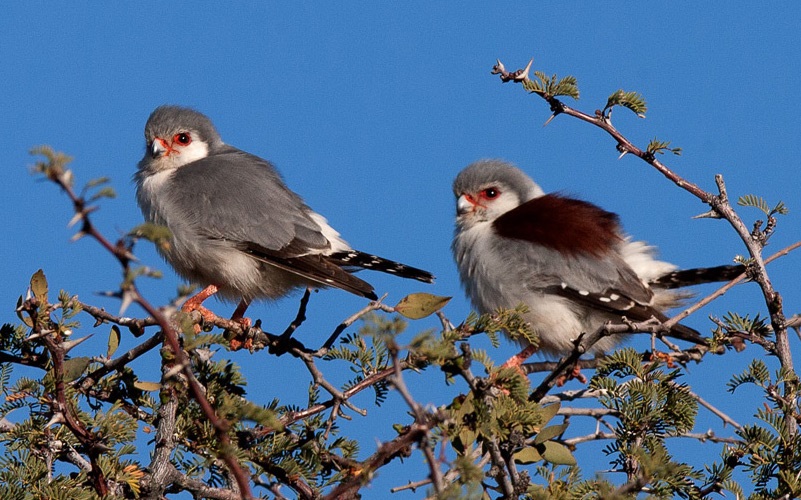
Local and international bird-watchers are inevitably drawn to the region by the tourism gem of Cape Town, the capital of the adjacent Western Cape Province, and by the region’s scenic and cultural diversity, well-developed infrastructure, high standard of accommodation, and excellent network of national parks and provincial and private nature reserves. A total of 615 bird species have been recorded in the Western and Northern Cape Provinces, and a two-week trip could expect to yield in excess of 300 species. Indeed, over 220 species have even been seen around Cape Town in a single day!
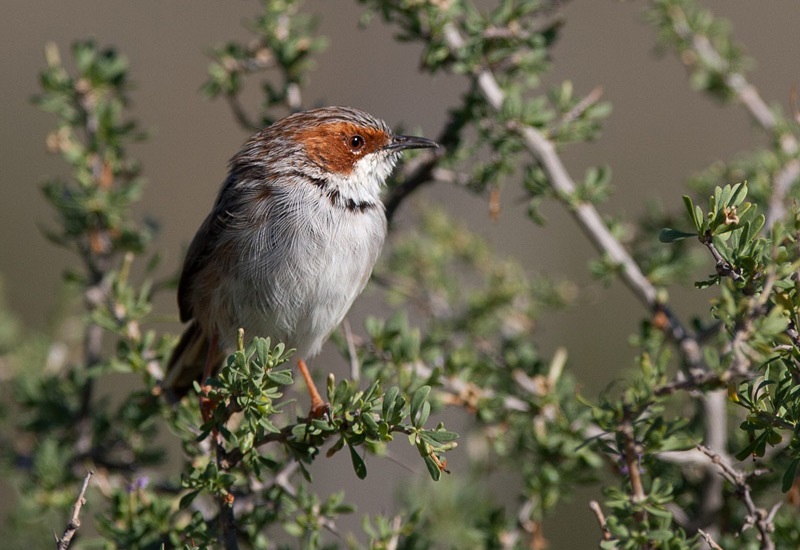
Although the sheer diversity of southern Africa’s more tropical eastern region is inevitably higher, most of these species have wide distributions and extend over much of eastern Africa. The west, by contrast, is rich in species largely restricted to this region, making the Western and Northern Cape Provinces an essential destination in both global and local terms. See also Western Cape Province.
Top 10 bird species in the Northern Cape are: Ludwig’s Bustard, Red Lark, Burchell’s Sandgrouse, Black-eared Finchlark, Sclater’s Lark, Barlow’s Lark, Burchell’s Courser, Cape Eagle Owl, Cinnamon-breasted Warbler, Dusky Sunbird.
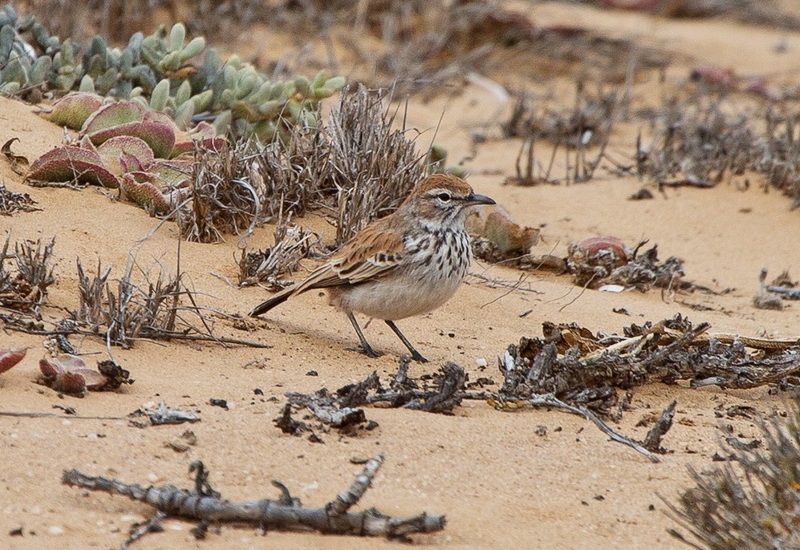
The Northern Cape Province has a wide diversity of birding habitats including the Arid Kalahari Savanna, Succulent and Nama Karoo (the majority of the Karoo lies in the Northern Cape) and wetlands and coastal habitats. Perhaps Africa’s most characteristic vegetation type, Arid Savanna forms an intermediate between grassland and woodland and occupies the famed Kalahari region. Rainfall is in the form of summer thunderstorms that support good grass cover below a varying density of thorn-trees. Although savannah supports a diverse bird community, and the characteristically arid savannah in this region holds endemics such as Kalahari Robin, Ashy Tit, Marico Flycatcher and Crimson-breasted Shrike. Raptors abound.
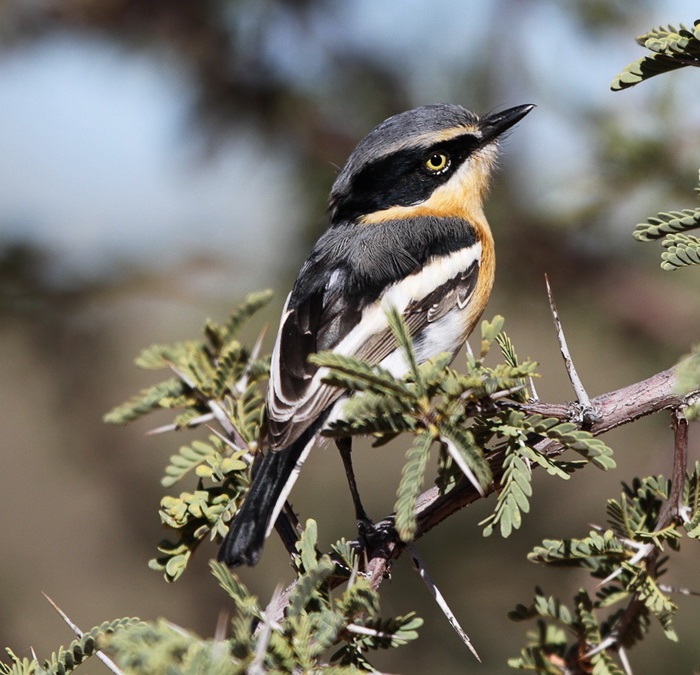
The Karoo is a vast semi-desert area that is divided into two botanically very different regions and dominates the arid western half of South Africa. It forms part of the most ancient desert system in the world, and is an open area of stony plains, scattered with small shrubs, punctuated by low dunes and hills koppies, and is very sparsely inhabited. The Succulent Karoo Biome is characterized by small succulent plants, supported by low but predictable winter rainfall, whereas the summer-rainfall Nama Karoo Biome is dominated by grasses and low, woody shrubs.
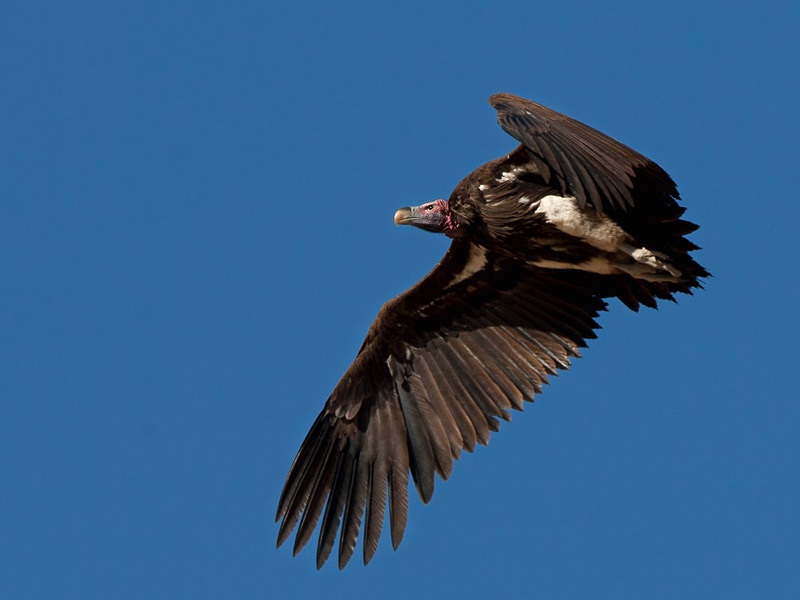
The Succulent Karoo Biome is one of Africa’s biodiversity hotspots, and has the highest diversity of succulent plant species in the world. Despite these fundamental climatic and vegetation differences, most Karoo bird specials occur in both biomes. Karoo endemics and near-endemics include Karoo Korhaan, Ludwig’s Bustard, Red, Barlow’s, Karoo Long-billed, Stark’s and Sclater’s Larks, Black-eared Finchlark, Karoo and Tractrac Chats, Karoo Eremomela, Cinnamon-breasted Warbler, Namaqua Warbler, Pale-winged Starling and Black-headed Canary.
The productive Benguela Current surges up the Atlantic coast, bringing chilly, nutrient-rich waters from Antarctica, while the warmer Agulhas Current moves down the east coast of Africa from more tropical climes. The birds endemic or near-endemic to the plentiful waters of the Benguela Current of southern Africa’s west coast are African Penguin, Cape Gannet (breeding endemic only); Cape, Bank and Crowned Cormorants, African Black Oystercatcher, Hartlaub’s and Cape Gulls and Damara Tern (breeding endemic only).
ombined with a visit to the Western Cape Province, the Northern Cape provides the best chance for arid country specials. Foreign birders visiting the Northern Cape Province will need a week based in the region. Birding is excellent throughout the year and the rains fall in summer. Anytime of year is good for the indigenous mammals.
Text Source: Fatbirder
Photo Source: Birding Ecotours
Map Source: Google Maps
